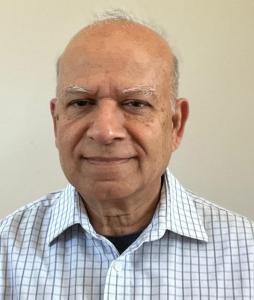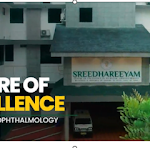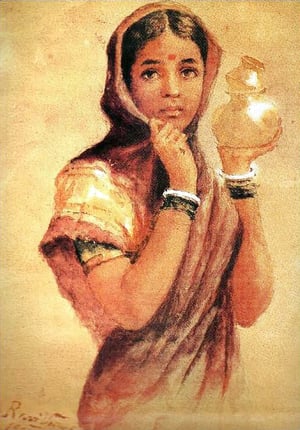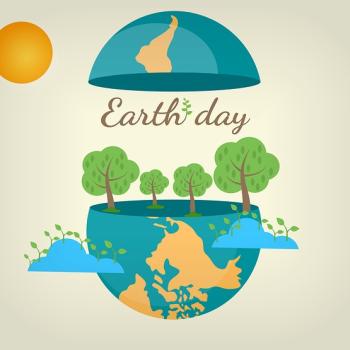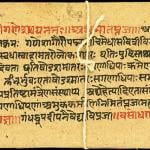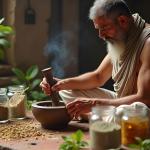Indian Manuscripts: Advantage World

Background
As per the National Mission for Manuscripts website:
A manuscript is a handwritten composition on paper, bark, cloth, metal, palm leaf or any other material dating back at least seventy-five years that has significant scientific, historical or aesthetic value. Lithographs and printed volumes are not manuscripts. Manuscripts are found in hundreds of different languages and scripts. Often, one language is written in a number of different scripts. Manuscripts have knowledge content.
They form an invaluable part of India’s documentary heritage. They capture our thoughts, achievements, experience and lessons learnt from history; in other words, they constitute our ‘memory.’ The National Mission for Manuscripts has taken the initiative to nominate Indian manuscripts for inclusion in UNESCO’s Memory of the World register. Under this programme, UNESCO provides recognition to the most valuable documentary heritage of the world and facilitates its preservation and universal access to it. Moreover, efforts are made to increase awareness of the significance of these records.
(https://www.namami.gov.in/what-is-menuscript)
According to this organization, Bharat (India) has so far recovered more than 5 million of them, while some 10 million, or more, are still hiding in someone’s attic, basement, in some ancient bags or in some decrepit corners of age-old homes or buildings.
Namboothiris family found one such manuscript a few decades back in the family home. This manuscript became the source of the script of ‘happy ending’ for several people across the world over a period of last 30 years or so who had completely lost the hopes for a vision or quality vision in this lifetime.
This story belongs to ‘Sreedhareeyam Ayurvedic Eye Hospital’, the only organization of its kind in Kerala that has singularly positively impacted the lives of hundreds of thousands of people.
Their website says:
Shalakya Tantra
Eye treatment based on Ayurveda was not so popular the world over. However, with the concept that “Sarvendreeyanam Nayanam Pradhanam” (of all, eye is the most vital), we started exploring all possibilities for effectively utilizing the vast traditional knowledge in Ayurveda that our family “Nelliakkattu Mana” handed down through centuries, especially in Shalakya Tantra. The Ayurvedic texts of Sushrut Samhita, Charak Samhita and Ashtang Hruday have given a detailed description of shalakya tantra. It offers a detailed study of etiology, diagnosis, prevention and treatment of diseases that affect organs above the neck. According to the texts, there are about 76 diseases pertaining to the eyes, whereas the ears are prone to 25 different kinds of ailments. The nose can be affected by as many as 18 diseases, while the lips are easily susceptible to 11 types of diseases. Shalakya tantra finds the remedy for all such diseases. Shalakya tantra is not only concerned with the immediate treatment of the ailments but also with the follow-up treatment, in order to ensure that the disease is uprooted and eliminated. Therefore, it proves to be one of the most effective methods of treating the ailments related to the upper portion of the body, above the neck.
(https://www.sreedhareeyam.com/our-legacy)
Namami Project
According to Bibek Debroy, a Sanskrit scholar, Bharat had an estimate of 35 million manuscripts, many not yet recovered. While speaking on the International Mother Tongue Day organized by UNESCO in Paris in March, he said:
To give some idea of how large 35 million is, since the advent of printing, an estimated 130 million books have been published in all languages of the world. Most people here will have heard of Kautilya (350—275 BCE) and the text on political economy and governance that he authored, titled Arthashastra. I don’t know how many of you know that the manuscript of Arthashastra had been lost. It was rediscovered by R. Shamasastry in 1904, published in 1909 and translated into English in 1915. Who knows how many such treasures lie hidden in the form of manuscripts?
(https://swarajyamag.com/culture/the-wonder-that-is-sanskrit)
Let us talk about some extremely important manuscripts from ancient Bharat which have huge civilizational and global impact. They are now accepted as extraordinary and vastly helpful to the entire mankind.
Manuscripts Impacting Civilizations
1. Kautilya Arthashastra
This is a complete statecraft guide, much more detailed with much wider scope than even the constitution of our country. It is a treatise not only on running governmental organizations but also a work that deals with duties of Kings, Ministers, local officials, methods of diplomacy, environmental and ecological protection, conservation of forests and forest lands, economic models, optimum taxation etc. It also shows ways and means of defeating an enemy. Encyclopedic in its coverage, many scholars have wondered how one head could carry such a vast knowledge. Even today, Arthashastra provides many lessons to the Government on how to run the administration. In one of the podcasts by Sanjay Dixit (Jaipur Dialogues) where he interviewed one Retd. Indian Army Commanding Officer, he mentioned that even Pakistan is teaching Arthashastra to their Army. Unfortunately, Bharat still has to understand and appreciate the value of our knowledge. Merely carrying out research and allocating funds for the same is not enough. Such knowledge has to be passed on to the young generations.
2. Patanjali Yoga sutra
This text has only 196 sutras, the material that fits in just one page, but every year helps millions of people the world over with their health, physical as well as mental, apart from the businesses which run into billions of dollars every year. It is just one page, one manuscript. That is the POWER of the manuscript.
3. Ayurveda
Ayurveda comprises several texts, the main being Charaka Samhita, Sushruta Samhita and Ashtanga Hridaya/Ashtanga Sangraha. Ayurveda has been instrumental in helping the entire mankind for the last several thousands of years and is still helping. In fact, the world is realizing the potential benefits of Ayurveda and more and more people are turning to it for health concerns. I am very proud to say that this is one subject about which the world can never thank Bharatiya Rishis enough. Just this subject can be a topic of one whole book or several books. Even though this Ayurveda is several thousand years old, it survived, though perhaps only to the extent of 20% of the original textual content. Even then, it is changing people’s lives for the better. This knowledge survived in the beginning by oral tradition of knowledge transfer and then eventually someone decided to put down on some media in writing. These writings were the manuscripts.
And, by the way, even though this ‘science’ is several thousands years old, not one medicine is withdrawn from the market while a hundred-year old Allopathy stream had to call back hundreds of drugs from the market after being used by the patients for a few months to a few years.
4. Panini’s Ashtadhyayi
This manuscript is the building block of our languages. It is the heart of our ancient and the most perfect language the world has ever known, Samskritam.
5. Shrimad Bhagwat Geeta
For the last thousands of years, this wisdom addressed to Arjuna, which was actually supposed to be for the entire mankind has been nourishing, enriching and making more spiritual not only Bharatiya-s but also the whole population of the whole world. Just imagine if someone had not found this manuscript, how would the world have been? And, the reality is that apart from this wisdom, millions of manuscripts from Veda-s, Upanishad-s, as well as many unidentified sacred texts, are missing. Just imagine, what kind of treasure trove must be lying hidden in someone’s basement or attic that could be helpful to humanity.
6. Ramayana, Mahabharat
Once again, the world would have been deprived of the wisdom, the teachings by our rishis for living lives in the most appropriate/fulfilling ways and the itihasa (history) of the oldest civilization on the earth.
7. Accelerated Learning
Georgi Lozanov, a Bulgarian, created Suggestopedia, a teaching method focusing on relaxation and suggestion for accelerated learning, was inspired by his study of hypermnesia in yogis in Bharat. Obviously, Bharatiya yogis learnt these techniques from ancient texts.
8. Vedic Mathematics
Vedic Mathematics being taught today which amazes people with incredible math skills is also an ancient Bharatiya knowledge that also was found in some manuscripts.
9. Natyashastra
The importance of this shastra can never be overestimated.
It’s considered a foundational text for Indian classical dance, music, and theatre, influencing these arts for centuries and is perhaps the most ancient treatise on performing arts. It is the magnum opus that describes; relation between director and audience, structuring a play, acting techniques, costumes and make-up, body movements, makeup and costumes, music and musical instruments to be used, the integration of music with the performance, the dimensions of the stage and its decorations with lighting, and size of the hall and seating of audience. Directors and producers of plays mention that its relevance is high even in this date and age.
While I have not touched the subjects of math, which itself has so many authors and manuscripts apart from astronomy, astrology and various other subjects under STEM, and a lot can be written on these subjects, I would like to pause here for the obvious reasons.
What Manuscripts Hold for The Mankind
I do not wish to make a big list of the manuscripts which are already available for mankind to benefit from. The only point I want to make here is that let us understand the value of these manuscripts, extend our gratitude to the wisdom, the knowledge hidden there and give credit where it is due. This is the least we can do.
Let the world acknowledge that the rishis (seers) of ancient Bharat only wished well for the entire humanity, not just for the sons of the soils.
Bharat lost close to nine million manuscripts when Nalanda University was burnt to ashes by the Muslim invader Bakhtiyar Khilji in the twelfth century and we certainly lost many more millions of them in other universities which were brought down by such religious terrorists.
As we saw above, these manuscripts have all kinds of knowledge stored in their wombs and they have beyond profound knowledge that can help the mankind. The knowledge can be ancient but still relevant for today’s challenges. And, a lot of that knowledge related to STEM can be all-time relevant too.
Humble Suggestion
Through this medium, if I can reach out to the power-that-be in New Delhi, I would suggest that at the earliest, they realize the importance of our manuscripts and take all the steps necessary to:
- Open or facilitate opening of thousands of Samskrit schools headed by excellent Samskrit teachers, offering them all the necessary infrastructure as well as facilities and decent pay. This should be done in a fire-fighting mode. In fact, it is high time studying this language should be made attractive for bright minds and rewarding as well to make careers out of them.
- Wherever Samskrit scholars are available, invite them with all the dignity, tools, facilities, infrastructure, offering appropriate environment and attractive incentives to work on translation as well. Who knows, there might be some manuscript lying hidden that has a formula for a faster way to reach the Moon, or cheaper fuel for rockets or maybe, a formula for making invisible Drones.
- Hire hundreds of thousands of high school and University students across Bharat during vacation to cover a distance of about 50-75 km around their homes and search for the hidden manuscripts by going door to door. In fact, this may be done throughout the year by employing young enthusiasts as well.
Conclusion
If ‘Kautilya Arthashastra’ can guide the ruler how effectively one can rule, if ‘Patanjali Yogasutra’ can positively impact the lives of the practitioner and also drive economy, and if ‘Naytashastra’ can help the entertainment industry create enchanting works of arts, just imagine how this world can enrich itself by simply following the texts which have been created by our rishis thousands of years back.
We, human beings, have been fortunate that we did find, for example, the texts on ‘Ayurveda’, without which, it is extremely hard to imagine what would the world have looked like. I would sincerely wish the authorities spend a large amount of resources as one of the top priorities to unearth more such hidden treasures so that the world can become a much more better place to live in.
Udit Shah
Windsor, Canada
Note: Kindly offer your valuable feedback in the comments section.



